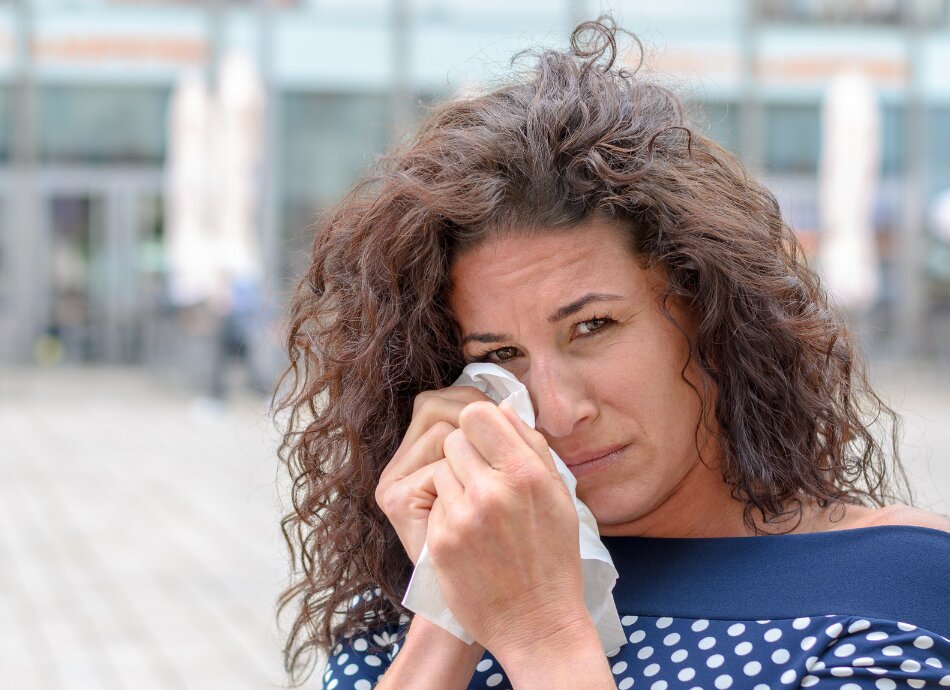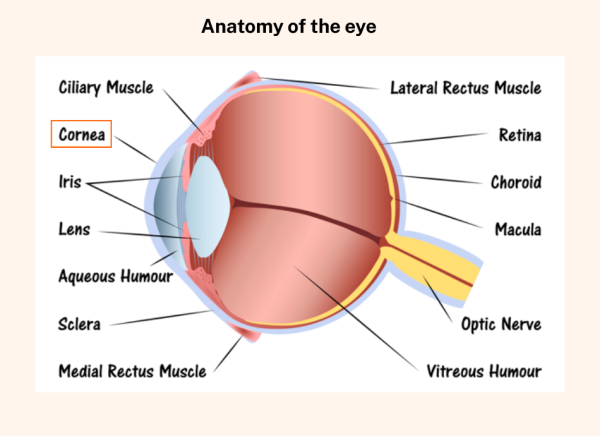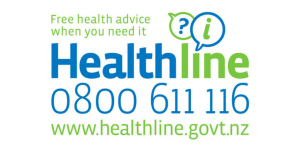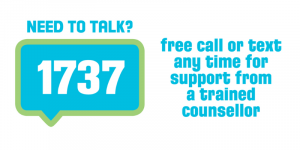Corneal abrasion
Key points about corneal abrasion
- A corneal abrasion is a scratch on your cornea – the front part of your eye.
- It can be caused by anything that grazes your eye, such as your fingernail, a tree branch, or getting dust or dirt in your eye.
- It can very painful because there are sensitive nerve endings on the surface of your cornea.
- A small scratch usually heals itself in 1 to 2 days. Severe corneal abrasions take longer to heal and may need treatment.
- See a healthcare provider if you have blurred vision, eye pain, a watery eye, redness, sensitivity to light, irritation, or find it hard to open your eye.

A corneal abrasion is a cut or a scratch on your cornea which is the clear front part of your eye that covers your iris (the coloured part of your eye).

Image credit: Depositphotos
Damage to your cornea can cause severe pain because there are sensitive nerve endings on the surface of the cornea.
Small corneal abrasions usually heal by themselves in 1 to 2 days, but you may be given an antibiotic ointment or drops to prevent infection. Severe abrasions can take longer to heal and may need treatment to prevent further damage and vision problems.
You should see your healthcare provider if you have blurred vision, eye pain, a watery eye, redness, sensitivity to light, irritation, or a hard time opening your eye, even if there doesn't appear to be anything in your eye.
You can get a corneal abrasion from anything that grazes your eye, including your fingernails, a make-up brush or a tree branch. Working with sharp objects puts you at risk of eye injuries including corneal abrasions.
If you wear contact lenses, these can cause corneal abrasions if the lens has a rough or torn edge. They can also be caused by a small foreign object getting stuck between your cornea and a contact lens, or under your eyelid and this can damage your cornea, eg, when you blink.
Dirt, sand, chemicals or an eye infection can also cause corneal abrasion.
As well as pain in your eye you may have:
- blurred vision
- sensitivity to light
- a watery eye
- a red eye
- a feeling that something is in your eye.
See your healthcare provider if you have these symptoms even if there doesn’t seem to be anything in your eye.
Your healthcare provider will ask you about any eye injury, what it feels like and your use of contact lenses (if relevant). They might test your vision and will examine your eye and eyelids to check for any foreign object that may be stuck there. They may give you anaesthetic eye drops to make the examination more comfortable. They may also use a special dye to colour the surface of your cornea so that any damage shows up.

Image credit: James Heilman via Wikimedia Commons(external link)
Your healthcare provider may refer you to an eye specialist (an ophthalmologist) if they think you have a corneal ulcer. An ulcer is more serious than a corneal abrasion and needs to be treated promptly.
Your healthcare provider may be able to remove any particles from your eye. They’ll prescribe an antibiotic ointment or drops, such as chloramphenicol, to prevent infection from developing. You can also take pain relief medicine, such as paracetamol or ibuprofen, for any pain.
If your eye is uncomfortable, a pad can be put over it which may provide some relief. You can’t drive while the eye pad is on.
You should see your healthcare provider or optometrist after 24 to 48 hours so they can check that the abrasion is healing, that your symptoms are improving and there are no signs of infection.
You are likely to be referred to a specialist eye doctor (an ophthalmologist) if:
- you have a large corneal abrasion
- your abrasion isn’t healing after a couple of days
- you might have an infection.
If something is irritating your eye and you think you may have a scratch on your cornea, you can check your eye for small particles that may be stuck under your eyelid. Flush your eye with clean water or sterile saline solution (available from the pharmacy) once or twice to try and remove any particles. Don’t rub or press on your eye. If your symptoms don’t improve, see your healthcare provider who can check your eye and provide any needed treatment.
While your eye is healing:
- don't rub or touch your eye
- don't wear contact lenses until your healthcare provider or optometrist says it's safe to do so
- wear sunglasses to ease discomfort caused by sunlight
- don’t drive if you have an eye pad on.
Continue with pain relief medicines if you need to. You may also be advised to use a lubricant, such as artificial tears, to help keep your eye moist while it heals.
Return to your healthcare provider if your pain or vision get worse or if your symptoms continue for more than 72 hours.
It’s best not to get anything in your eye in the first place. Wear protective eyewear or sports goggles where appropriate, trim trees above eye level, and see your optometrist if you wear contact lenses and experience any discomfort.
If you feel like there’s something in your eye, don’t rub your eye as that can cause a scratch on your cornea. Try:
- blinking your eye several times,
- pulling your upper eyelid over the lower lid
- rinsing your eye gently with clean water or saline solution.
If these things don’t help, see a healthcare provider as soon as you can. You should also get advice if something is stuck on your cornea – don’t try to remove it yourself.
Most small corneal abrasions heal on their own in 1 to 2 days, although your eye may feel gritty for a few weeks. Healing will take longer if you have a large abrasion or if it becomes infected. You may have scarring and damage to your vision if a serious abrasion isn’t treated properly by an ophthalmologist.
In a few people, the skin over the cornea heals but it can stick to your eyelid at night. It may rip and cause pain when you open your eyes or when your eyes move rapidly while you’re dreaming. This is called recurrent corneal erosion. If this happens, you may need to use a lubricating eye ointment or you may need a referral for bandage contact lenses (a contact lens used for treatment that's left in your eye day and night for an extended time period) or surgery.
References
- Corneal abrasion(external link) American Optometric Association, US
- Corneal ulcers and abrasions(external link) Auckland HealthPathways, NZ, 2024
- Corneal abrasion(external link) Guy’s and St Thomas’ NHS Foundation Trust, UK, 2022
- What is a corneal abrasion?(external link) WebMD, US, 2025
Credits: Healthify editorial team. Healthify is brought to you by Health Navigator Charitable Trust.
Reviewed by: Dr Divya Perumal, Ophthalmologist, Auckland
Last reviewed:





